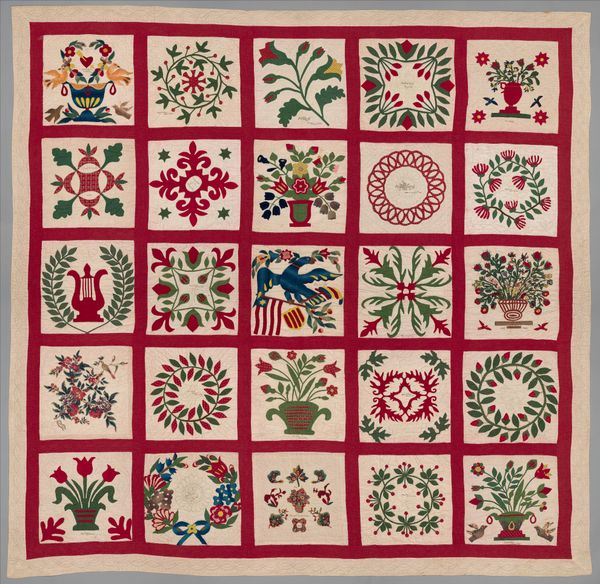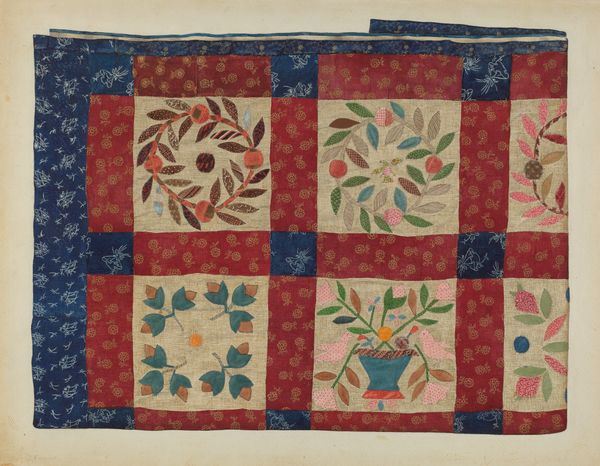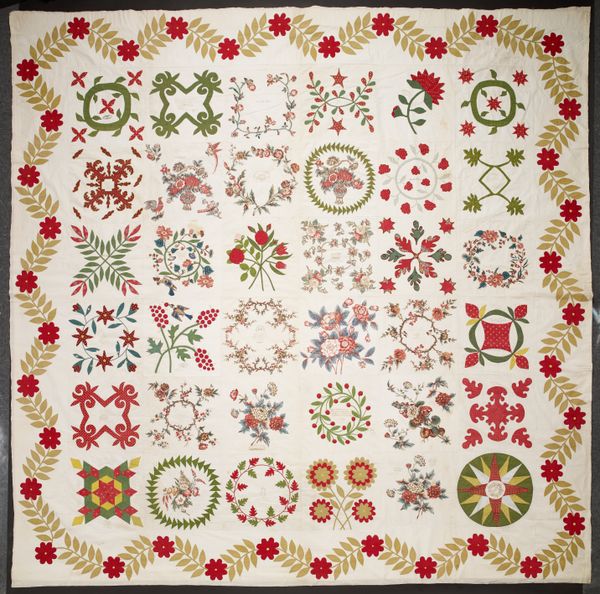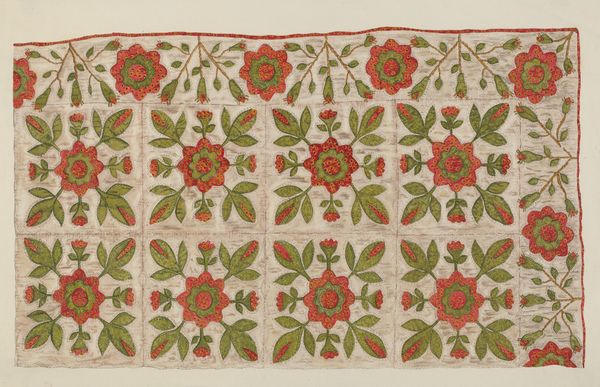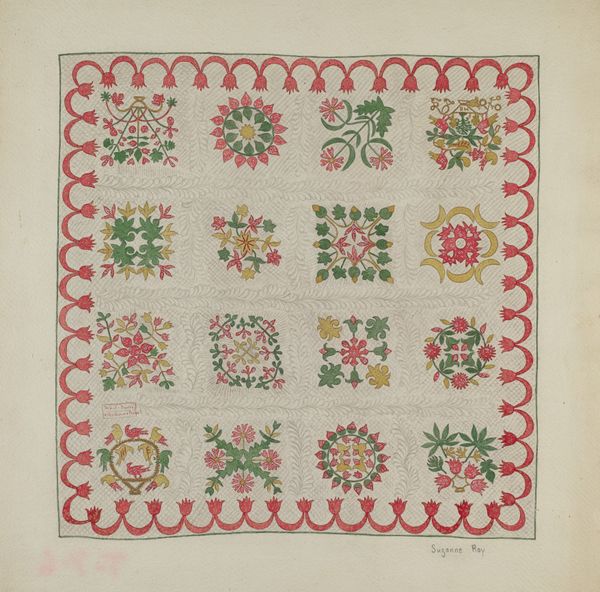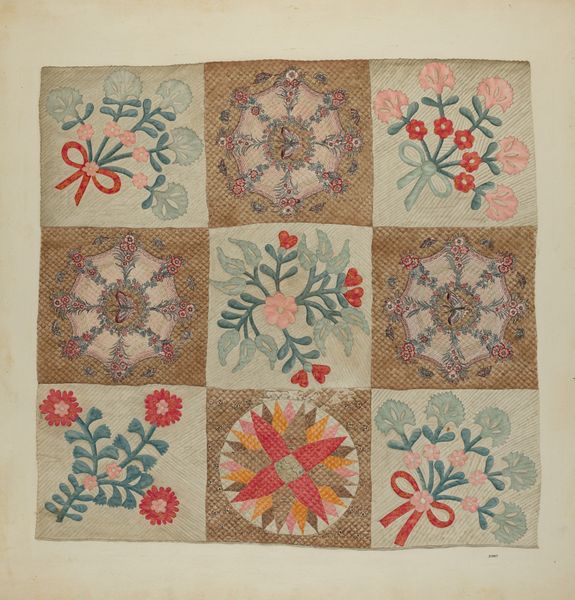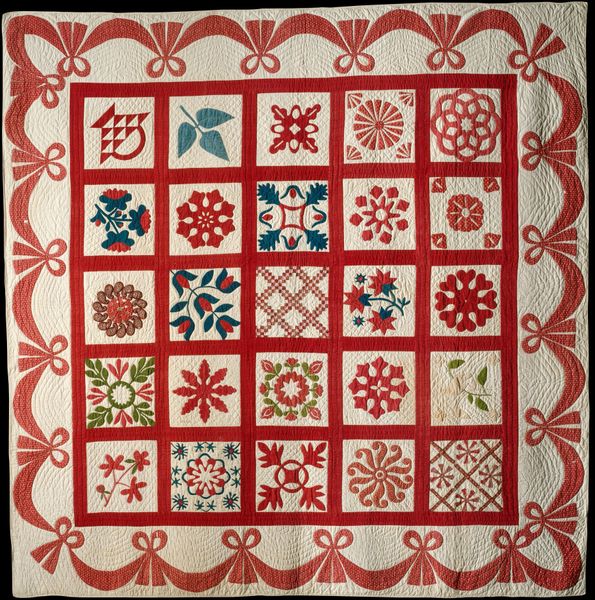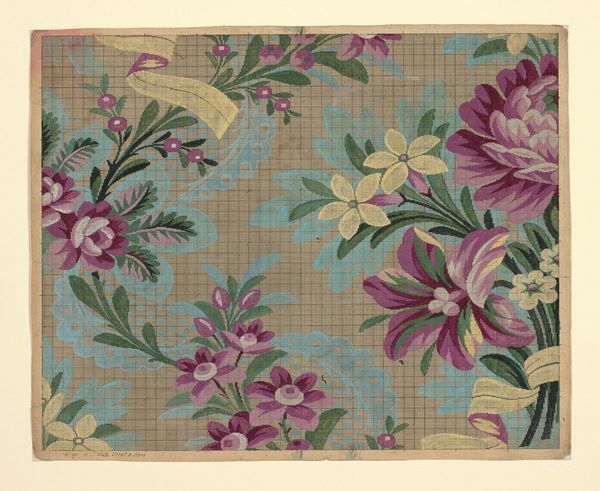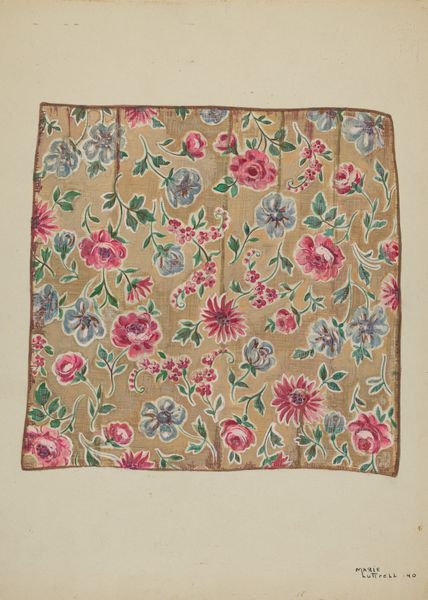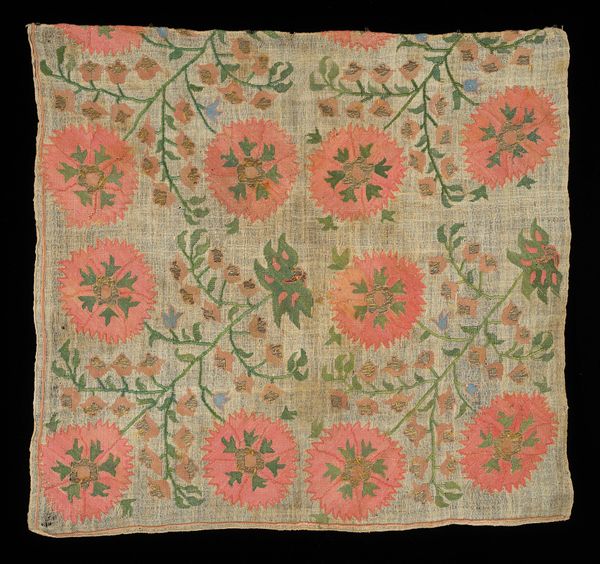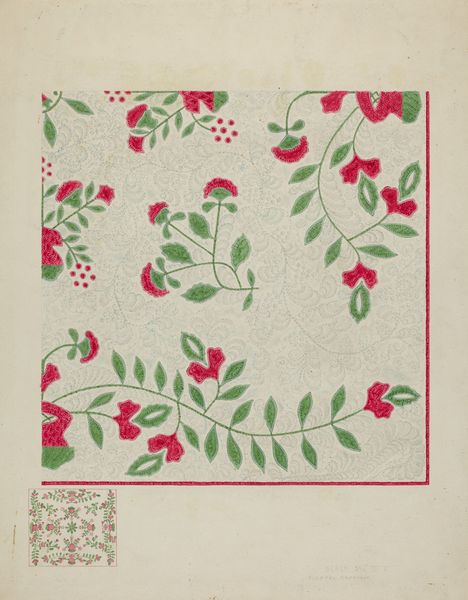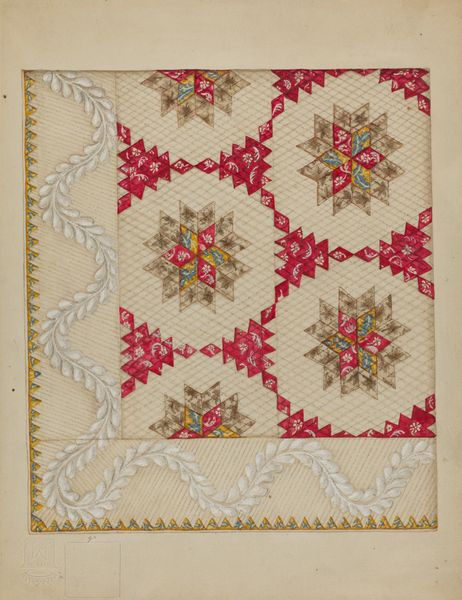
textile
#
folk-art
#
textile
#
folk-art
#
geometric
Dimensions: 187.6 × 223.5 cm (73 7/8 × 88 in.)
Copyright: Public Domain
Curator: Well, the first word that comes to mind is ‘charming’! The whole piece glows with sweetness, it feels…almost like a valentine, somehow. Editor: It certainly evokes warmth. You’re looking at a "Bedcover (Bride's Album Quilt)," dating from about 1850 to 1860. It was made by Fanny (Hicks) Lovejoy and is held here at the Art Institute of Chicago. You see the various textile patterns in this delightful piece of mixed-media work. Curator: Oh, "Bride's Album Quilt" —that resonates! Seeing the repeating floral wreaths and hearts; everything points toward love, family, and tradition. It's very folksy, yet it’s complex; each square is unique. I’m very curious to know how the tradition evolved of celebrating this event by creating family albums. Editor: The tradition reflects socio-economic and cultural trends that were then current. We know that making these quilts was a very social process. Various women would gather, sharing fabrics and stories as they sewed the individual blocks. This quilt encapsulates so much shared history and affection, and it also represents the changing status of women in that century. It also documents visual objects such as flora and geometric designs which were becoming familiar to Americans. Curator: Precisely. Those geometrical patterns offer more than mere aesthetics; they signify order, and stability, key qualities desirable when starting a new home. The repeated heart symbols…they aren’t just decorative. I sense a sincere wish for a long-lasting, passionate bond for the couple. Do you believe that quilts were just social artifacts, or art object displayed prominently? Editor: Both, I suspect. Functionality played a key part – it was definitely a useful item. Yet it also clearly has enormous symbolic value. The placement, the colour selection—all suggest deliberate artistry. Consider it’s enduring legacy: now housed within the walls of this great museum. Curator: The colours, even faded by age, reinforce the initial charm, they retain the memory of human interaction. It serves as a poignant visual archive, really, preserving memories for both family and strangers alike. Editor: A beautiful thought. And, considering its craftsmanship and enduring presence, it reveals volumes about gender, class and material life during the mid-19th century.
Comments
No comments
Be the first to comment and join the conversation on the ultimate creative platform.
